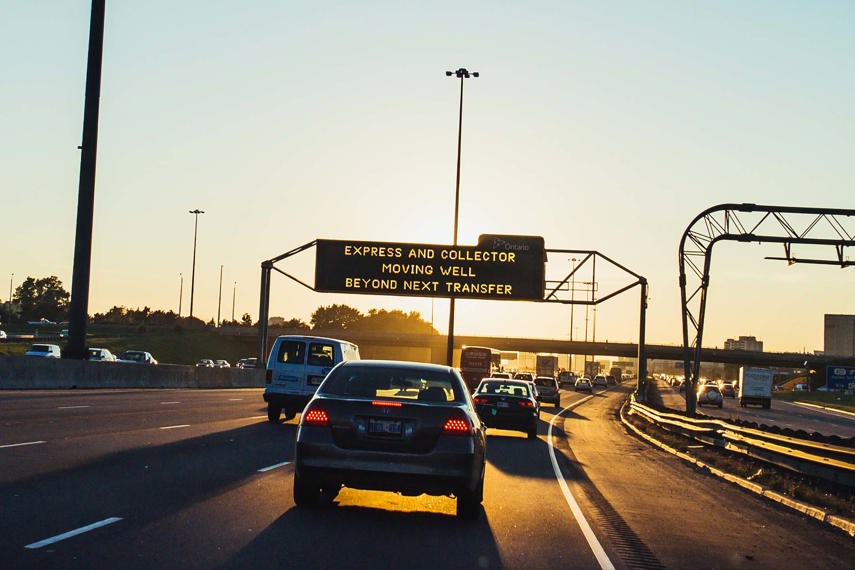The majority of modern vehicles come standard with a little button that allows drivers to reduce their fuel consumption by 10 percent to nearly 50 percent, or even more.
Pressing said button reduces your mental workload at the wheel, creates a smoother drive, makes the highway a more pleasant place for everyone on the road, and can, literally, put money back in your pocket.
The button in question is your cruise control.
Cruise the Highway Like a Pro NOW!
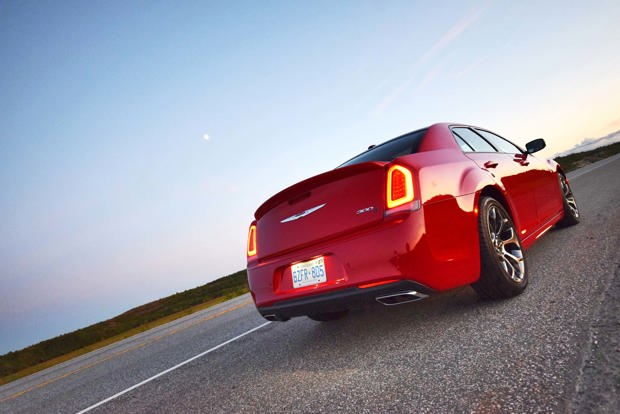
From my experience logging over 1,000 highway kilometres per week, I’m under the impression that a huge number of drivers aren’t using their cruise, despite its presence in their vehicle and the numerous benefits it provides.
“But I read a thing on the interwebs that using your cruise control can make your car fly into the sky if you hit a puddle!”
No, it can’t.
“But cruise control makes me feel like I’m not in control, or makes me sleepy because I have less to do!” Another popular excuse from non-users.
You know those drivers who speed up as you try to pass them? That’s often a subconscious thing, caused in part by that driver’s failure to use their cruise control. Or, the driver who slows down and speeds up as they cruise along the highway? Same deal. This might even cause you to slow down and speed up, too (especially if you’re following too closely).
Failure to maintain a steady speed is irritating to other motorists, and it costs you money. If your fluctuating speed causes other drivers to have to slow down and speed up, then you’re costing them money, too.
Gas companies hate him!
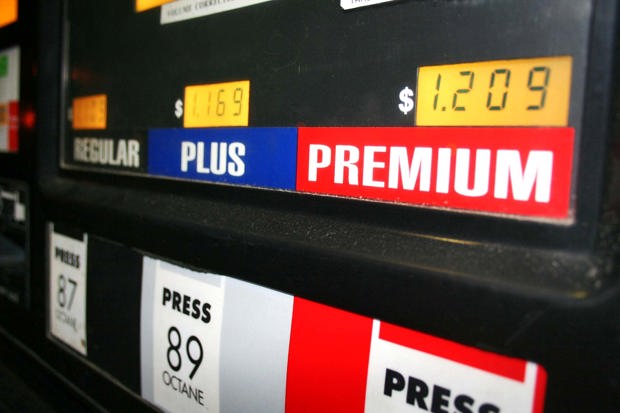
Literally, using your cruise control can reduce your fuel consumption and the fuel consumption of vehicles near you. So, use your cruise control, folks: It lets you do your part towards the smooth and efficient flow of traffic. It makes you a less-irritating driver. It’s better for the environment. It saves you cash.
How much?
To answer that question, we looked at some data provided by our pals at Natural Resources Canada (NRCan). They’re the authority for vehicle fuel economy information, and offer a wealth of information (and figures) on saving fuel, including the use of cruise control.
Here’s the gist: if you don’t use the cruise control, you’ll probably try to hold a steady speed, but more likely, you’ll be fluctuating up and down around a given speed, over and over again, in a continuous cycle.
According to NRCan, drivers manually targeting an 80 km/h cruising speed will likely cycle between 75 and 85 km/h every 18 seconds or so. This uses 20 percent more fuel than setting your cruise control to lock in at 80 km/h. At this speed, you may burn $10 of gas per hour with your cruise control on, or $$12 without it. That’s a potential savings of two bucks per hour, just from pressing a button.
If you’re just the worst at manually holding a steady speed, you may fluctuate between 75 and 85 km/h more frequently – perhaps every 12 seconds. In this case, you’ll burn a whopping 48 percent more fuel than setting your cruise control to lock in steadily at 80 km/h. Here, you could be tossing nearly five bucks out the window for every hour you drive.
How many hours do you drive per week? Month? Year? Crunch the numbers on your own, but in any case, you’ll find the savings really add up over time.
If your desired cruising speed is higher, or your fluctuations are more frequent or drastic, the wasting of money and fuel is even more severe. A really bad driver could, feasibly, be using 60 percent more fuel than one who uses their cruise control on the same drive. Ultimately, it’s not hard to waste a whole bunch of fuel if you’re trying to hold a steady cruising speed manually.
Save money today with this one weird trick!
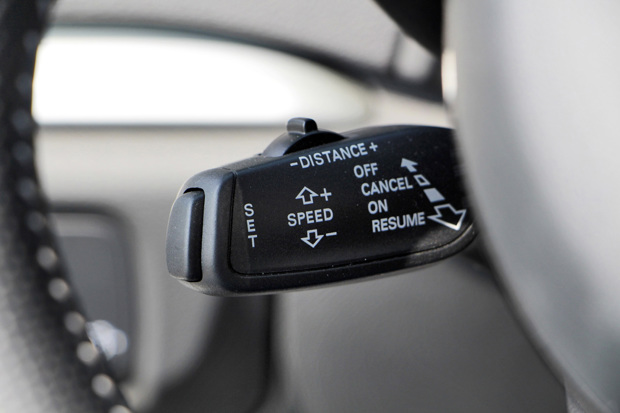
Let’s expand on this fuel-saving stuff by simplifying and explaining a few concepts.
- A vehicle travelling at a steady speed will use less fuel than a vehicle fluctuating about a certain speed, because engines are less thirsty when they’re running in a steady state, not revving up and down.
- A vehicle travelling at a lower speed will use less fuel than a vehicle travelling at a higher speed, all else being equal.
- The larger the vehicle, the more pronounced the effects of the above two concepts.
With regard to the third point above, NRCan notes that a large part of what affects a vehicle’s aerodynamics (and fuel mileage) is referred to as its “face”. If you look at a vehicle head-on, one with a larger forward-facing surface area will tend to be less aerodynamic and thirstier than a vehicle with a smaller forward-facing surface area, all else being equal.
It’s all about percentages, and those percentages also illustrate why it’s best to choose a more moderate speed when you engage that cruise control system.
You should drive the speed limit on the highway, but you probably won’t. If the limit is 100 km/h, chances are you’ll go about 115 km/h. Maybe 120 km/h. Maybe more. This difference in speed results in a roughly proportional increase in fuel use – so, driving at 115 km/h uses 15 percent more fuel than driving at 100 km/h, and driving at 120 km/h uses 20 percent more fuel than driving at 100 km/h.
According to NRCan figures, if it costs you $10 to drive a certain distance at 100 km/h, it would cost you $12 do drive that same distance at 120 km/h. That’s like throwing a toonie out the window every hundred clicks.
In another example provided by NRCan, let’s pretend a Toyota Yaris and a Ford F-150 each travel 50 kilometres per day on the highway. Over a year, the difference in travelling that 50 kilometres at 120 km/h versus 100 km/h amounts to $340 for the Ford, and $181 for the Toyota. That’s the effect of the forward-facing surface area, right there.
Don’t Take Another Road Trip Before You Read This!
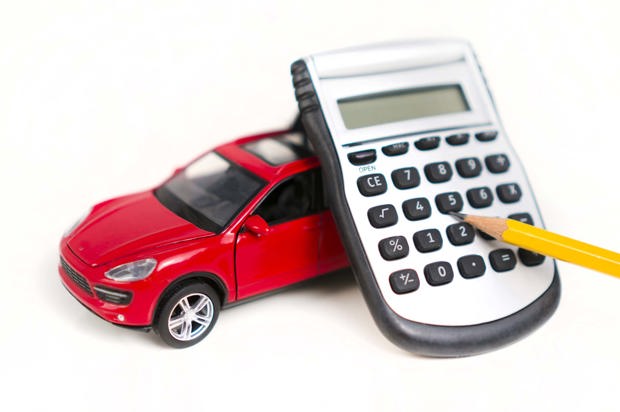
“But I have things to do and places to be!”
Sure – but how much time are you really saving?
With the cruise at 100 km/h, a 400-kilometre trip I make twice weekly takes me four hours. At 120 km/h, it takes me 3 hours and 32 minutes.
If I’m driving a car that gets 10 L/100km on the highway, and gas is at $1.30 per litre, then the trip uses 40 litres of fuel for a cost of $52 if I’m travelling at 100 km/h. At 120 km/h, I’ll arrive half an hour earlier, but with $10 less in my pocket. That’s $10 to save 30 minutes each time I make my bi-weekly trip.
I save an hour each week, but it costs me $20 to do so. So, over the course of a year, this twice-a-week trip relieves my bank account of an extra $1,040, if I drive 20 km/h faster.
That’s a lot of highway driving. Maybe you do less. Maybe your car is more fuel-efficient. But, in any case, reducing your speed 10 or 20 percent can literally save you hundreds (or even more) in a year, and using the cruise control to hold that reduced speed steady can save even more. And don’t forget: driving a little slower is safer, easier on your vehicle, and puts less emissions into the atmosphere.
And a final note: remember that weight is another enemy of fuel efficiency. NRCan data illustrates that reducing your vehicle’s weight (perhaps by removing unused gear, trailering provisions, cargo carriers, and unnecessary equipment) can save hundreds or even thousands of dollars of fuel over the life of a vehicle. Over 200,000 kilometres, removing 200 kilograms from a light truck can turn in a savings of well over $1,700.
So, reducing your vehicle’s weight, and travelling at a lower speed are both very viable ways to reduce fuel consumption. But using your cruise control – if you aren’t already – is arguably the easiest way to make the biggest possible impact.
If you’re a cruise control hater, maybe it’s time to give that little button another try. It’s a free feature on almost all vehicles – it’s highly effective, simple to use, and can start saving you money right away! All you’ve got to do is tap a button.
